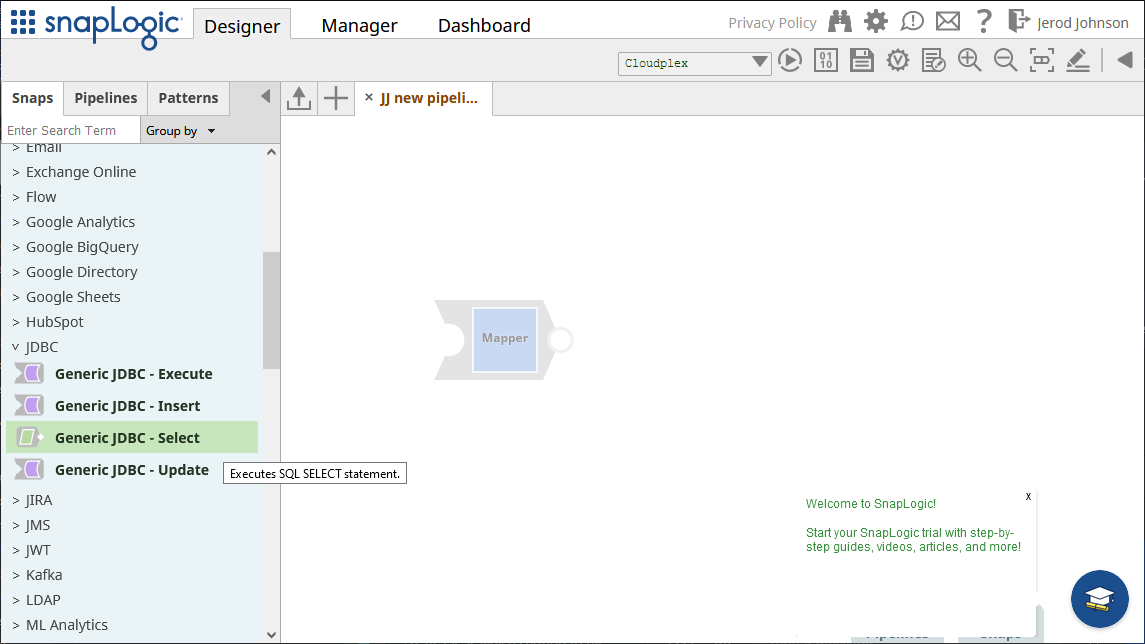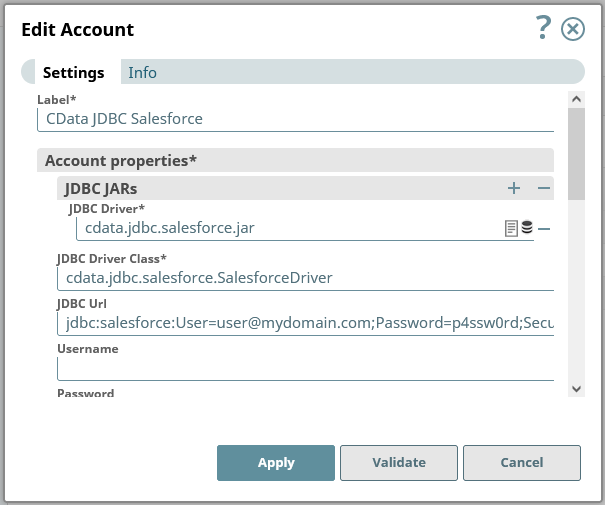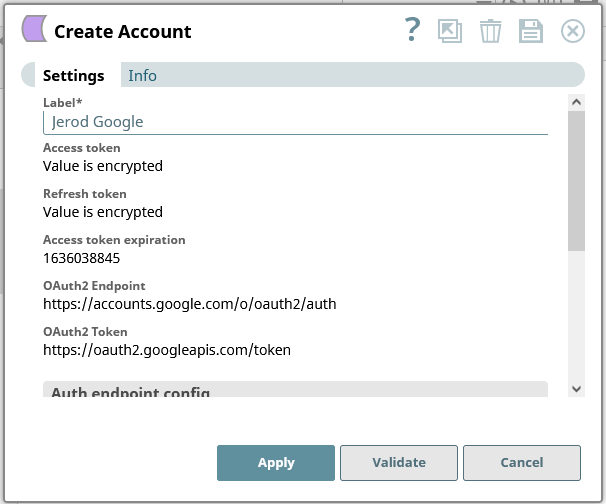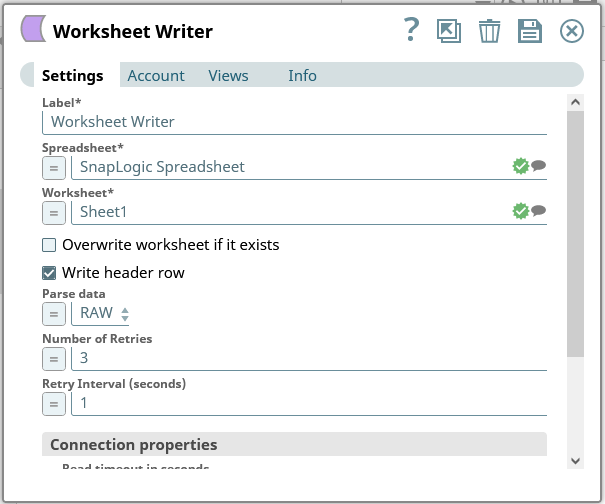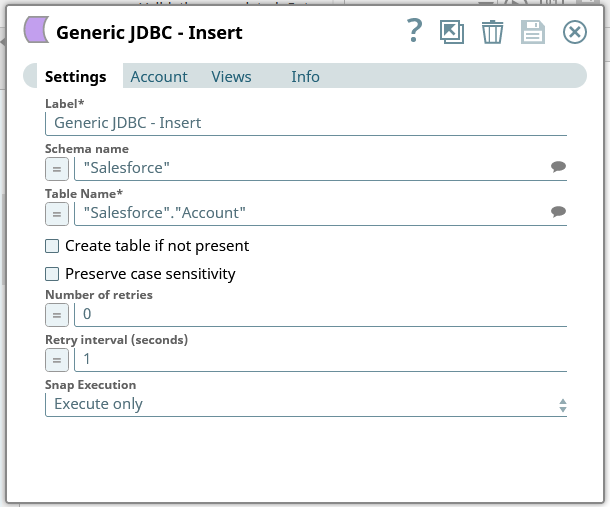Discover how a bimodal integration strategy can address the major data management challenges facing your organization today.
Get the Report →Integrate REST with External Services using SnapLogic
Use CData JDBC drivers in SnapLogic to integrate REST with External Services.
SnapLogic is an integration platform-as-a-service (iPaaS) that allows users to create data integration flows with no code. When paired with the CData JDBC Drivers, users get access to live data from more than 250+ SaaS, Big Data and NoSQL sources, including REST, in their SnapLogic workflows.
With built-in optimized data processing, the CData JDBC Driver offers unmatched performance for interacting with live REST data. When platforms issue complex SQL queries to REST, the driver pushes supported SQL operations, like filters and aggregations, directly to REST and utilizes the embedded SQL engine to process unsupported operations client-side (often SQL functions and JOIN operations). Its built-in dynamic metadata querying lets you work with REST data using native data types.
Connect to REST in SnapLogic
To connect to REST data in SnapLogic, download and install the CData REST JDBC Driver. Follow the installation dialog. When the installation is complete, the JAR file can be found in the installation directory (C:/Program Files/CData/CData JDBC Driver for REST/lib by default).
Upload the REST JDBC Driver
After installation, upload the JDBC JAR file to a location in SnapLogic (for example, projects/Jerod Johnson) from the Manager tab.
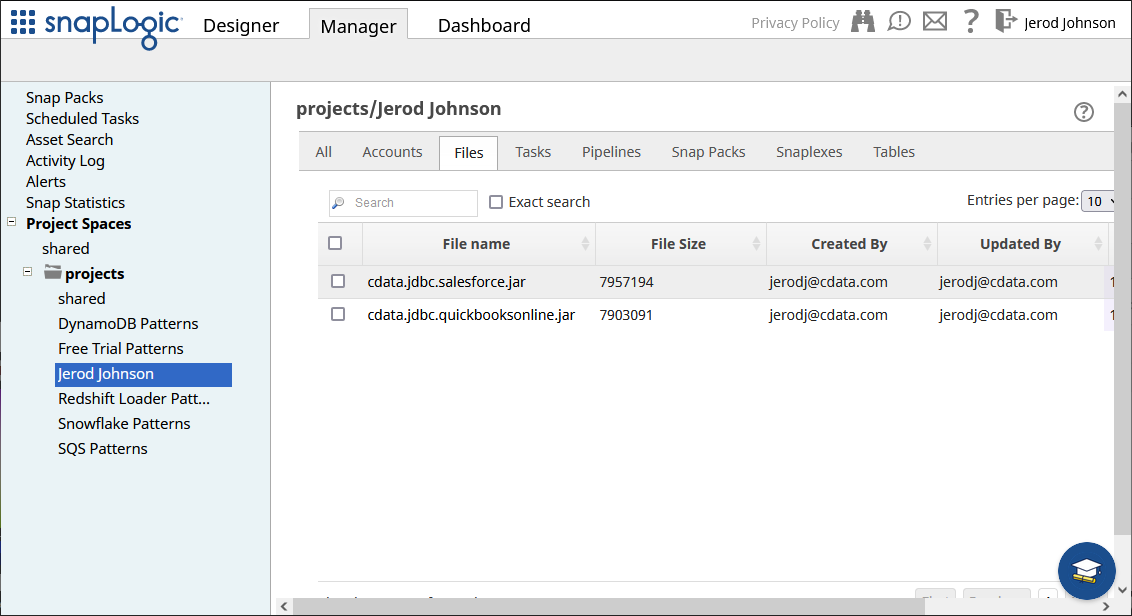
Configure the Connection
Once the JDBC Driver is uploaded, we can create the connection to REST.
- Navigate to the Designer tab
- Expand "JDBC" from Snaps and drag a "Generic JDBC - Select" snap onto the designer
![Adding a Generic JDBC snap onto the designer]()
- Click Add Account (or select an existing one) and click "Continue"
- In the next form, configure the JDBC connection properties:
- Under JDBC JARs, add the JAR file we previously uploaded
- Set JDBC Driver Class to cdata.jdbc.rest.RESTDriver
Set JDBC URL to a JDBC connection string for the REST JDBC Driver, for example:
jdbc:rest:DataModel=Relational;URI=C:/people.xml;Format=XML;RTK=XXXXXX;
NOTE: RTK is a trial or full key. Contact our Support team for more information.
![Configuring a connection (Salesforce is shown)]()
Built-In Connection String Designer
For assistance in constructing the JDBC URL, use the connection string designer built into the REST JDBC Driver. Either double-click the JAR file or execute the jar file from the command-line.
java -jar cdata.jdbc.rest.jar
Fill in the connection properties and copy the connection string to the clipboard.
See the Getting Started chapter in the data provider documentation to authenticate to your data source: The data provider models REST APIs as bidirectional database tables and XML/JSON files as read-only views (local files, files stored on popular cloud services, and FTP servers). The major authentication schemes are supported, including HTTP Basic, Digest, NTLM, OAuth, and FTP. See the Getting Started chapter in the data provider documentation for authentication guides.
After setting the URI and providing any authentication values, set Format to "XML" or "JSON" and set DataModel to more closely match the data representation to the structure of your data.
The DataModel property is the controlling property over how your data is represented into tables and toggles the following basic configurations.
- Document (default): Model a top-level, document view of your REST data. The data provider returns nested elements as aggregates of data.
- FlattenedDocuments: Implicitly join nested documents and their parents into a single table.
- Relational: Return individual, related tables from hierarchical data. The tables contain a primary key and a foreign key that links to the parent document.
See the Modeling REST Data chapter for more information on configuring the relational representation. You will also find the sample data used in the following examples. The data includes entries for people, the cars they own, and various maintenance services performed on those cars.
![Using the built-in connection string designer to generate a JDBC URL (Salesforce is shown.)]()
- After entering the connection properties, click "Validate" and "Apply"
Read REST Data
In the form that opens after validating and applying the connection, configure your query.
- Set Schema name to "REST"
- Set Table name to a table for REST using the schema name, for example: "REST"."people" (use the drop-down to see the full list of available tables)
- Add Output fields for each item you wish to work with from the table
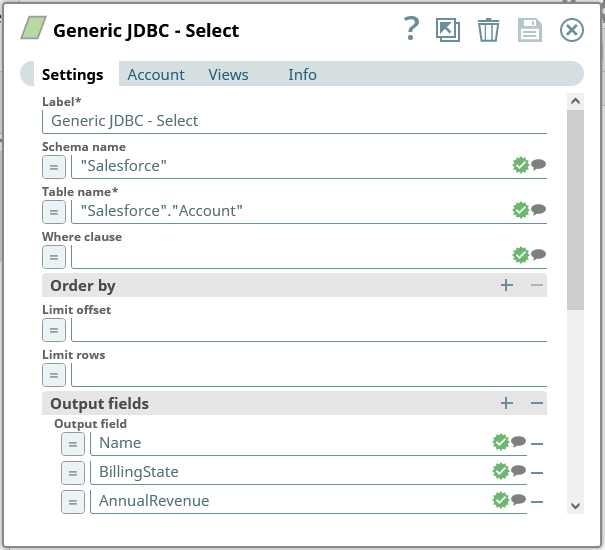
Save the Generic JDBC - Select snap.
With connection and query configured, click the end of the snap to preview the data (highlighted below).
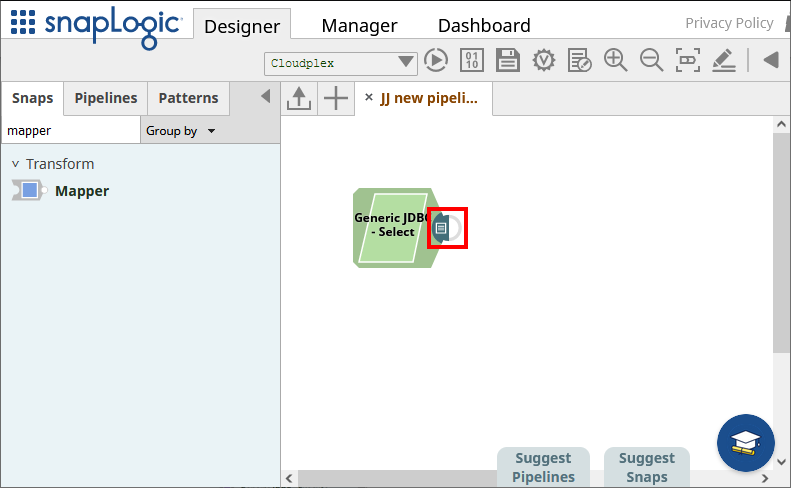
Once you confirm the results are what you expect, you can add additional snaps to funnel your REST data to another endpoint.
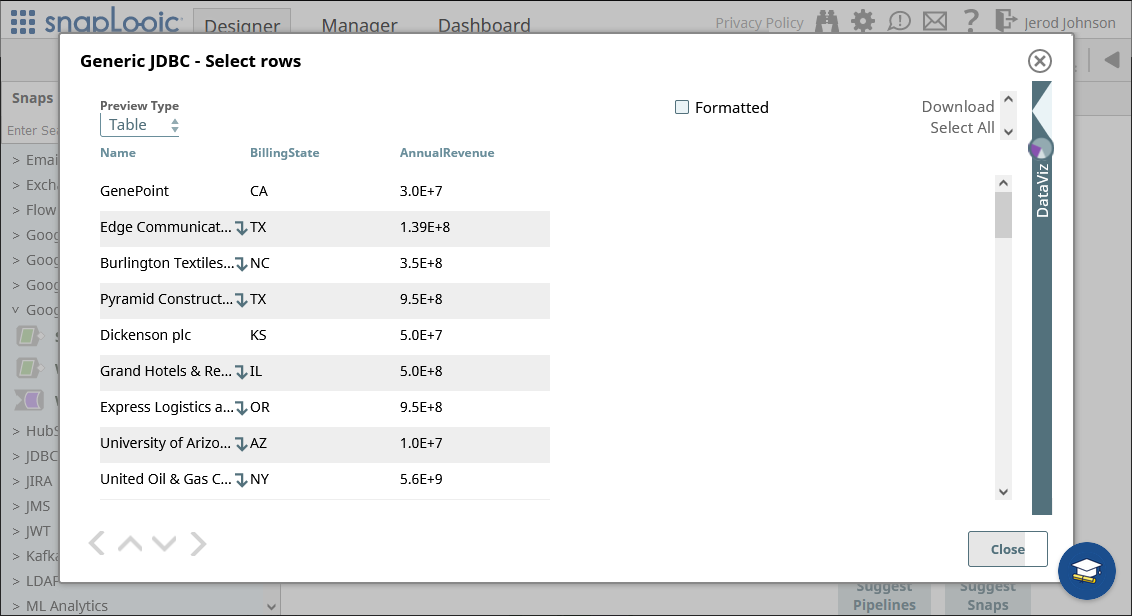
Piping REST Data to External Services
For this article, we will load data in a Google Spreadsheet. You can use any of the supported snaps, or even use a Generic JDBC snap with another CData JDBC Driver, to move data into an external service.
- Start by dropping a "Worksheet Writer" snap onto the end of the "Generic JDBC - Select" snap.
- Add an account to connect to Google Sheets
![Connecting to Google]()
- Configure the Worksheet Writer snap to write your REST data to a Google Spreadsheet
![Writing to a Google Spreadsheet]()
You can now execute the fully configured pipeline to extract data from REST and push it into a Google Spreadsheet.
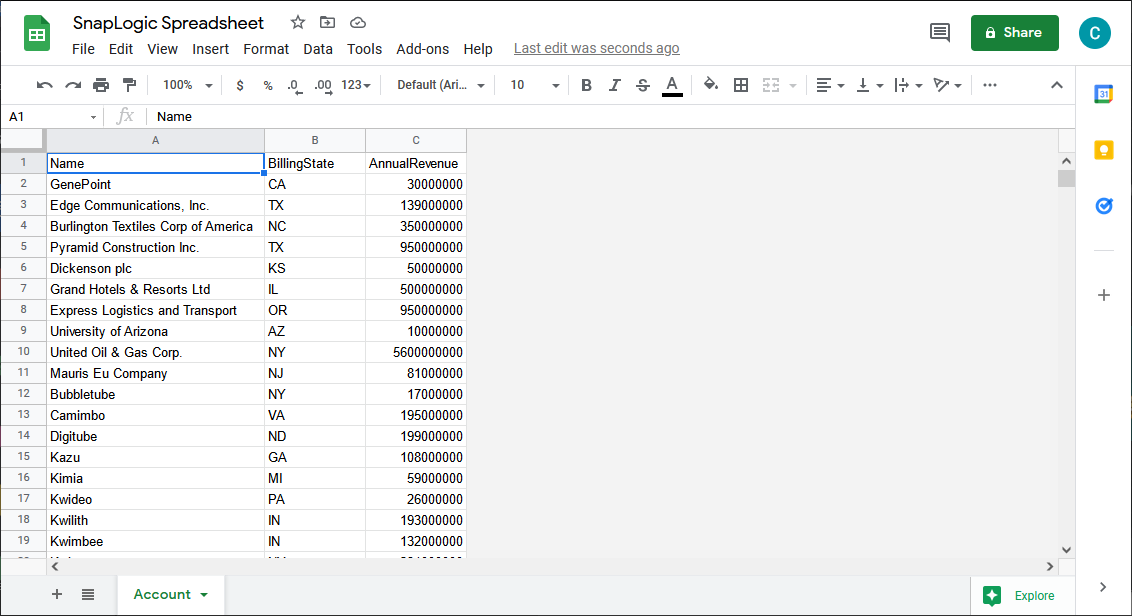
Piping External Data to REST
As mentioned above, you can also use the JDBC Driver for REST in SnapLogic to write data to REST. Start by adding a Generic JDBC - Insert or Generic JDBC - Update snap to the dashboard.
- Select the existing "Account" (connection) or create a new one
- Configure the query:
- Set Schema name to "REST"
- Set Table name to a table for REST using the schema name, for example: "REST"."people" (use the drop-down to see the full list of available tables)
![Configuring a INSERT snap (Salesforce is shown)]()
- Save the Generic JDBC - Insert/Update snap
At this point, you have configured a snap to write data to REST, inserting new records or updating existing ones.
More Information & Free Trial
Using the CData JDBC Driver for REST you can create a pipeline in SnapLogic for integrating REST data with external services. For more information about connecting to REST, check at our CData JDBC Driver for REST page. Download a free, 30 day trial of the CData JDBC Driver for REST and get started today.






